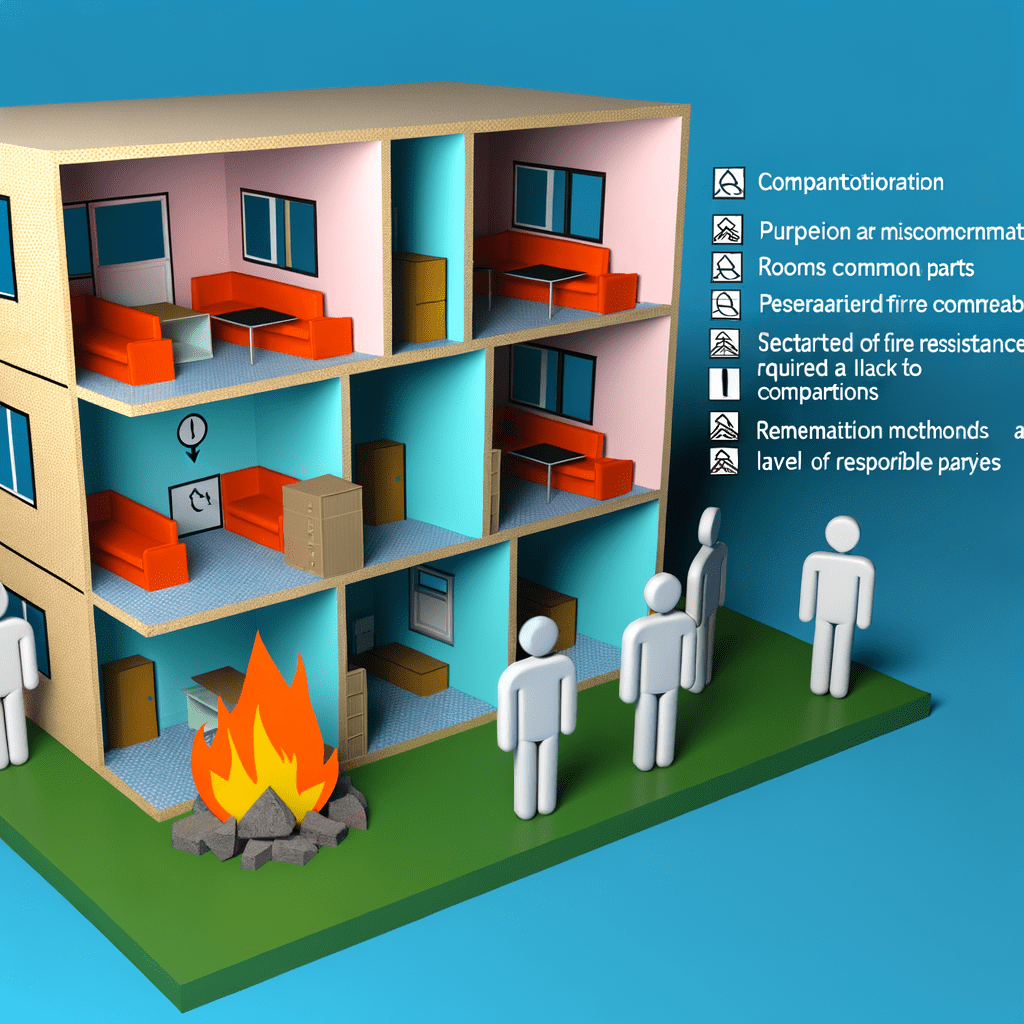Fire Safety: Compartmentation and Approved Document B: Protecting your Home from Fire Risks
Fire Safety: Compartmentation
When it comes to fire safety measures in a home, compartmentation undeniably plays a pivotal role. For the uninitiated, compartmentation, as the name suggests, involves dividing a building into different areas, or compartments, separated by fire-resistant walls and floors. The main idea behind compartmentation is to prevent the rapid spread of fire, hindering it from engulfing an entire dwelling within an incredibly short time.
Understanding compartmentation and its importance is crucial for every homeowner, house hunter, or investor. It not only gives a clear insight into the preventative measures of fire safety but also helps identify the potential risk of properties that lack adequate compartmentation.
Decoding Approved Document B
With the basics of compartmentation clear, it’s time to unfold the key guidelines stated in Approved Document B. Also known as ‘fire safety,’ Approved Document B provides a detailed overview of the building regulation norms in England, focusing majorly on fire safety. It contains the provisions and parameters one needs to adhere to when designing buildings, stipulating requirements that lessen the risk of fire-related incidents and facilitate effective means of escaping during such emergencies.
The Purpose Behind Compartmentation and Approved Document B
Implementing compartmentation or complying with the regulations stated in Approved Document B is not a mere legal mandate. The purpose is deeper and more consequential. Compartmentation provides a robust barrier to fire outbreaks, isolating distinct sections of a building and thus slowing the spread of fire and smoke. This delay allows residents ample time to evacuate, besides giving the fire services a window to extinguish the fire.
Simultaneously, Approved Document B encompasses the guiding framework for fire safety in new constructions, alterations, and extensions for residential, commercial, and mixed-use spaces. It outlines the various technical measures required to ensure adequate fire safety, including the fundamentals of compartmentation.
Compartmentation: Between Rooms and Common Areas
When considering compartmentation in dwellings, there are specific guidelines about fire resistance between different areas. For instance, there needs to be substantial fire resistance between rooms within a dwelling and between a dwelling and the common parts, such as stairways or lobbies.
Typically, both walls and floors separating compartments should offer about an hour of fire resistance in houses or two hours in the case of flats or maisonettes. This provision in Approved Document B signifies that, in the event of a fire, occupants have a high chance of escaping before a fire breach.
Potential Risks and Remediation
A dwelling lacking appropriate compartmentation can trigger catastrophic outcomes in the event of a fire. The swift spread of fire endangers lives, leads to significant property damage, and can impact neighbouring buildings in severe cases.
As for remediation, Approved Document B suggests reinstating fire-stopping and incorporating fire doors where necessary. This remediation typically entails engaging expert services to identify fire safety shortcomings and rectify them as per the mandated standards.
Who Bears the Responsibility?
Knowing who bears responsibility for ensuring compartmentation is in line with Approved Document B is as vital as understanding the concept itself. According to building regulations under the Housing Act, the duty predominantly lies with the building owner or the person carrying out the work. Therefore, homeowners, landlords, or even property managers should be vigilant about ensuring that appropriate fire safety measures are in place and maintained in their buildings.
While contractors and architects are entrusted with implementing these measures during construction or renovation, the ultimate responsibility rests with the building owner. Besides this, when buying a property, investing in a professional building survey can highlight any fire safety shortcomings, crucial for risk mitigation.
Understanding compartmentation and the stipulations of Approved Document B underlines the gravity of fire safety in buildings, driving home its indispensability. As homeowners, potential buyers, or investors, you need to recognize that appropriate compartmentation not only prevents the rapid spread of fire but also serves as an effective safety measure that saves lives and protects properties.
At Flettons, we’re committed to safeguarding your investment. When considering a property purchase, trust our seasoned expertise to reveal any hidden threats. For a thorough building survey, get your instant quote through our quote calculator or reach out directly at 0203 691 0451. Your home’s safety is our top priority.

